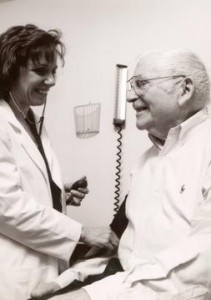The words, “patient engagement” and “patient safety” seem like common sense in healthcare. However, if you are a professional caring for patients today you can certainly identify with Eliza Doolittle’s lament in My Fair Lady.
“Words, words, words!
I’m so sick of words
I get words all day through
First from him, now from you
Is that all you blighters can do?”
Patients and families are equally peppered with these terms on information sheets, brochures, videos and media reports. The latter are often headlines that depict a collapse in patient safety where someone suffers or dies as result.
The Core Business of Healthcare
But what do these words actually mean within the “core business” of healthcare which is the relationship between the patient and clinician?
We lack a standard definition for either term. This is akin to the various sections in the symphony orchestra having different interpretation of the key signature on Beethoven’s 9th. Instead of hearing a brilliant score performed by talented musicians, the sound is ghastly driving the audience to yell in anger because they expected so much more.
We have a real problem today because engagement and safety are not operationalized to a common understanding. This is affecting patient care. Let’s take a look at some sample definitions and an example.
Patient Engagement:
There are myriad articles and blog posts addressing safety and engagement. Placing these words in context of providing care is where the confusion begins. As Dr. Leslie Kernisan points out in a post onThe Health Care Blog everyone agrees patient engagement is a good thing, but it does not have a common definition.
Dr. Rob Lambert’s posts on his blog, Musings, with edgy humor that the term patient engagementsounds like a season on The Bachelor. So, he offers some Internet definitions that range from “a national policy and core strategy for performance improvement” to the “holy grail of healthcare.” All of this leads to a laundry list of things to measure that have little to do with patient care.
Patient Safety:
The Institute of Medicine (IOM) defines patient safety as “prevention of harm to patients.”
Efforts to link quality to patient safety lead to examinations of the systems and cultures of care delivery also producing more terms and measurements as nurse researcher Dr. Mitchell points out in the Agency for Healthcare Research and Quality (AHRQ) chapter on patient safety.
The National Patient Safety Forum (NPSF) defines patient safety as the avoidance, prevention, and amelioration of adverse outcomes or injuries stemming from the processes of healthcare.
The Heart of a Relationship
But where is the focus on communication in these descriptions? Without effective communication, we cannot have engagement or safety. Communication is the heart of any relationship and no less so than between patients and clinicians. Communication that is meaningful between patients and clinicians incorporates active listening and this takes time as you seek to understand the patient’s human needs. Time is a scarce resource for clinicians today.
 Engagement and Safety for Mr. Jones
Engagement and Safety for Mr. Jones
Let’s see how this plays out on a clinical unit in a hospital today. Mr. Jones is being discharged home with instructions on how to best manage his congestive heart failure. He lives alone, is 82 years old, a bit hard of hearing and has macular degeneration in both eyes so his vision is limited. Home health care has been arranged to see him two days after discharge. This situation plays out hundreds of times every day, and if we are effectivelyengaging patients in their role of self-care, this is also asafety step in care. Research shows adverse drug events after discharge are the most common complication in the first month post discharge.
When he leaves the hospital Mr. Jones will be asked to respond to the survey about his care. One question on the HCAHPS survey asks him to rate both the nurses and the doctors on listening:
“During your hospital stay, how often did nurses (or doctors) listen carefully to you?
Never, Sometimes, Usually, Always
Listening, communication’s foundation, is essential in developing a good plan of care for the patient. Active listening is the door to understanding patients; their human needs beyond the lab and tests results that guide treatment. But listening takes time and time is not built into many care delivery models today.
How Communication Affects the Hospital
If Mr. Jones marks Sometimes on his survey, the hospital is going to feel the result. HCAHPS scores are factored into the payment structure and, when results are not optimum, the hospital loses money. It seems like a negative feedback loop to me.
Words matter. Words without clear definition become confusing when they must be incorporated into an organization’s work. If we are to accurately measure the outcomes related to these terms, particularly patient engagement, then clarity in their meaning is essential.
If we do not want this cacophony of words to blot out the critical relationship between patients and their clinical team, then we must force it to the forefront in writings, videos and within our organizations. Make this relationship the centerpiece and spotlight the results.
We would like to hear from you.
Leave a Reply